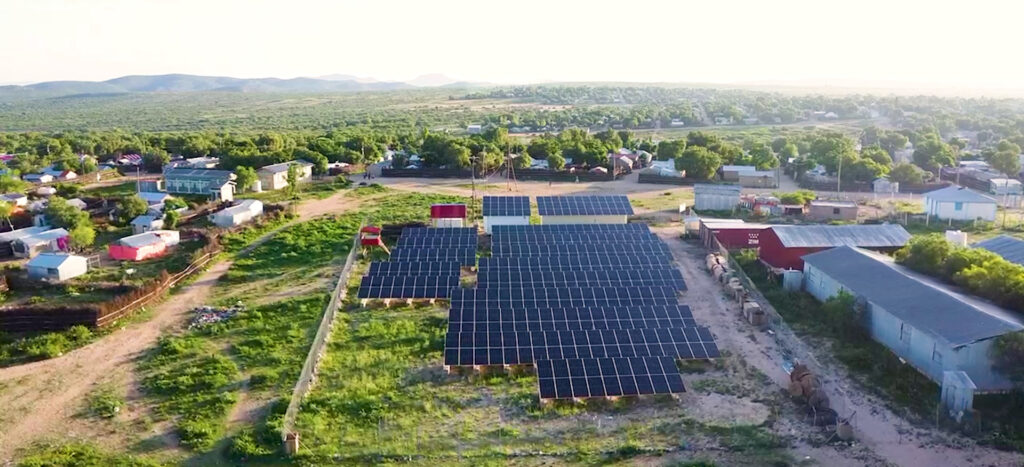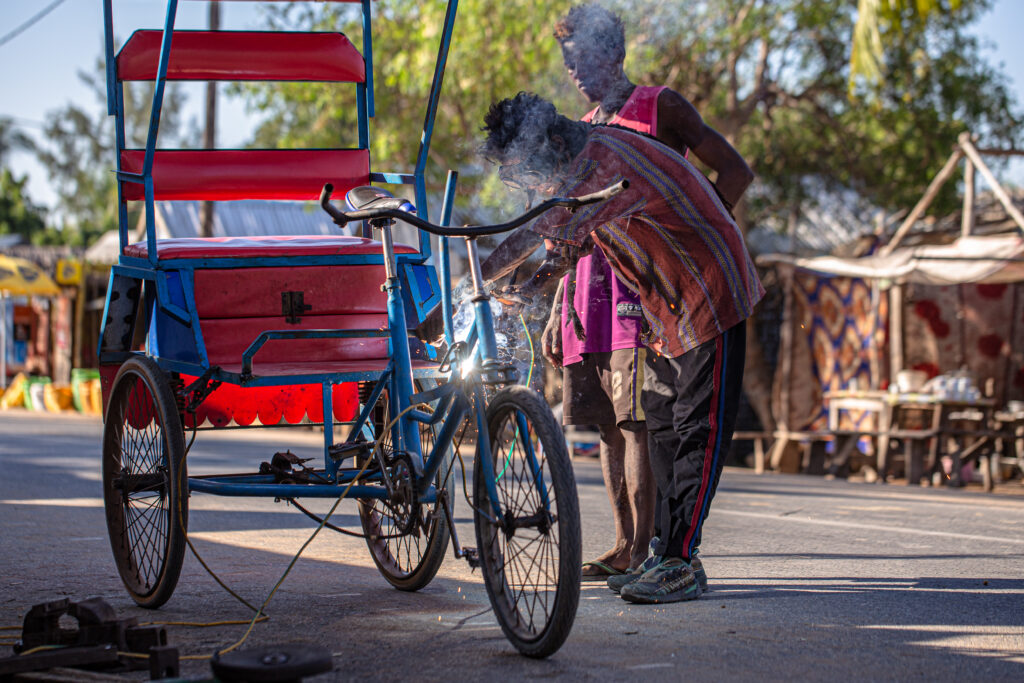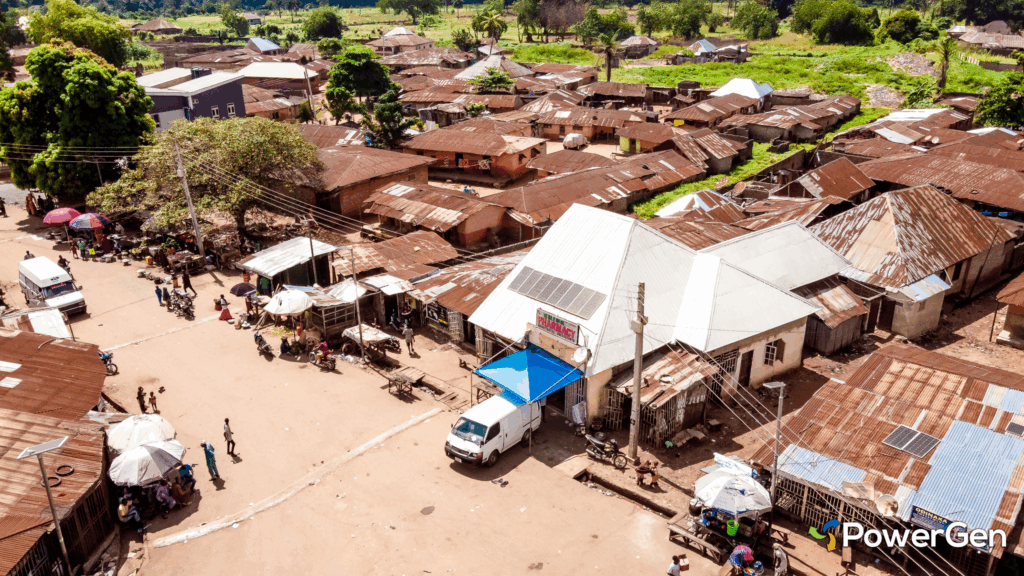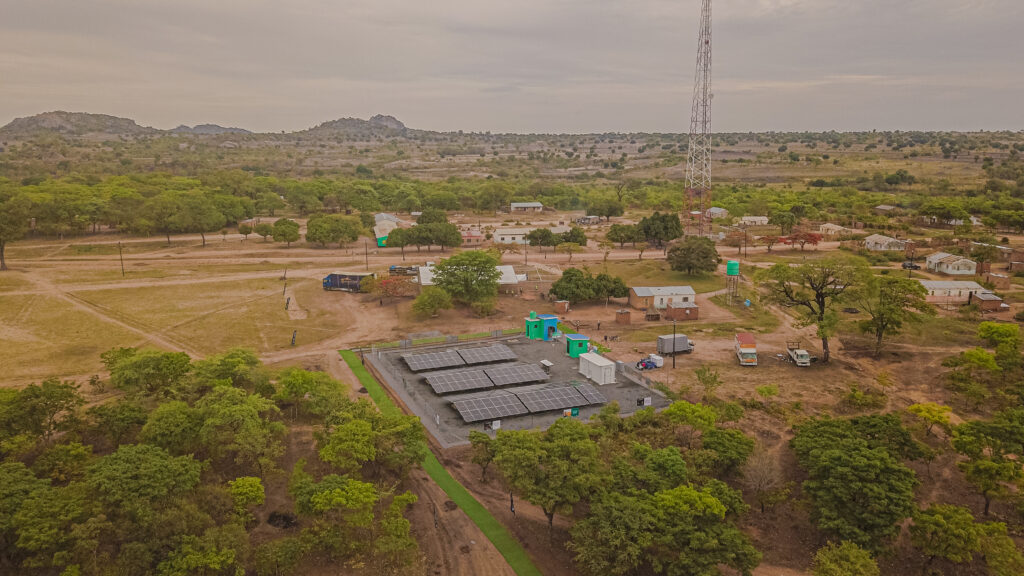Authored by Olamide Niyi–Afuye. CEO, Africa Minigrid Developers Association (AMDA)

Minigrid installation in Sheder, Ethiopia / Humanitarian Energy
As the second Africa Climate Summit starts in Addis Ababa, Ethiopia, the minigrid sector offers one of the continent’s most potent, yet underutilised, tools for meeting climate targets and driving rural development across Africa. But to deliver, minigrids need the right capital mix, smarter regulation, and collective action.
Addis Ababa is playing host to the second Africa Climate Summit, where stakeholders are charting African-led climate solutions. At the heart of the talks is how to unlock domestic and international climate finance while keeping African priorities and local innovation at the centre.
The summit is happening at a moment of acute urgency. Africa is racing into a hotter future, yet hundreds of millions remain in the dark. The continent holds immense renewable power but endures some of the world’s lowest electrification rates. Addressing this paradox requires solutions that combine speed, scalability, and resilience.
Renewable minigrids are Africa’s strongest card for closing the energy gap, cutting emissions, and powering rural economies. They bring climate impact, scale, and resilience together in one solution — and their potential is already being proven across the continent.
As leaders gather in Addis, the moment has come for Africa to rally behind its most practical and transformative investment. Scaling renewable energy is a collective responsibility, and within this opportunity, minigrids shine as the fastest path to climate security, rural prosperity, and economic transformation.
The Minigrid Advantage
Minigrids are a promising solution to address the energy access challenges faced by remote and underserved communities across Africa. Often powered by solar PV and backed by batteries, modern minigrids are a far cry from the diesel-based units of the past. They offer a cost-effective and scalable approach to electrification, enabling economic growth, and improving livelihoods. They can deliver round-the-clock power at lower long-term cost, without the emissions burden.
From the emerald shores of Madagascar in the Indian Ocean to the sun-scorched plains of Turkana in northwestern Kenya, minigrids are powering communities and sustaining livelihoods. Where minigrids switch on, life transforms. Villages turn into hubs of enterprise, children study under reliable light, and health centres keep their doors open. Each renewable minigrid silences polluting diesel engines and kerosene lamps, replacing them with clean power that slashes emissions and fuels hope.

Minigrids powering livelihoods in Madagascar / ANKA
In the heart of Ethiopia’s Oromia region, families in Huluku, Dalle, Moko Dodota, and Chefe Kora villages are standing on the brink of transformation. For generations, light came from smoky kerosene lamps, and farming relied on unpredictable rains. But through the DREAM initiative, Renewvia Solar Energy PLC is changing that story. Soon, children will read at night under clean, bright light. Parents will save money once spent on costly fuels. Most remarkably, farmers will irrigate their fields with Africa’s first solar minigrid-powered large-scale irrigation systems, watering their crops year-round. What was once a struggle for survival is becoming a story of opportunity, powered by renewable minigrids.
Minigrids offer a faster, more flexible route to electrification than grid extension in hard-to-reach and sparsely populated areas. Traditional grid extension requires years of capital-intensive investment and is often economically unviable for low-density populations. Minigrids, by contrast, can be deployed in months, with modular scalability, and can easily be integrated into the existing grid system to boost reliability.
This ability to complement and strengthen weak grid connections makes minigrids a lifeline for communities left in the dark – just like Toto in Nigeria, where power lines once carried only empty promises. In Toto, a community in Nasarawa State, North-Central Nigeria, that promise of electricity remained unfulfilled for more than a decade. At dusk, shopkeepers lit their stalls with the dim glow of kerosene lamps, and families fell asleep to the relentless hum of diesel generators, even as grid lines loomed overhead but delivered nothing in reality.
In 2023, that story changed. PowerGen Renewable Energy arrived with a vision not to replace the grid, but to breathe life back into it. They built renewable generation, refurbished infrastructure, introduced prepaid smart meters, enabled mobile payments, and used real-time monitoring to keep the system running seamlessly. In a landmark partnership, they struck a deal with the incumbent utility – Abuja DisCo – to buy and integrate six hours of nighttime supply into their renewable system, creating a reliable supply of electricity where darkness had long prevailed. Today, Toto’s homes and businesses are powered by a blend of minigrid and grid supplied electricity.
Toto’s success illustrates the transformative potential of integrating minigrids with existing grid infrastructure – a model that could be scaled across Africa to meet the continent’s enormous energy access challenge. The World Bank estimates that achieving universal energy access by 2030 will require connecting 380 million Africans via minigrids. The prize is substantial: slashing emissions, boosting rural incomes, and accelerating progress toward Sustainable Development Goal 7 (affordable, reliable, sustainable, and modern energy for all).

Toto Community in Nigeria / PowerGen Renewable Energy
Minigrids Powering a Low Carbon Future
The Paris Agreement hinges on every region contributing to the collective reduction of emissions. While Africa’s total historic emissions are negligible, its future trajectory matters both for the climate and for global equity. If the continent’s growing energy demand is met with fossil fuels, it could lock in decades of high-carbon infrastructure. Conversely, leapfrogging directly to renewables can deliver both climate mitigation and climate justice.
Renewable minigrids fit squarely within this vision. Their deployment can help the world stay on track to limit warming to 1.5°C by preventing millions of tonnes of carbon emissions annually. They also enable adaptation: powering cold storage for farmers, running water pumps during droughts, and ensuring health facilities can operate during climate-related emergencies.
The global community increasingly recognises that Africa’s energy transition is not a peripheral matter; it is integral to the net-zero agenda. But rhetoric must turn into financial flows.
Unlocking Capital for Minigrids
Despite clear economic viability and transformative social impact, minigrid deployment across Africa remains far below what is needed. The primary constraint is financing. Private investors recognise the potential of minigrids but face significant barriers, including high upfront costs, extended payback periods, and perceived regulatory uncertainties. Developers frequently struggle to access affordable, long-term, patient debt or equity at scale. Concessional capital, which can de-risk investments and attract private finance, remains too limited.
Blended finance approaches – combining grants, concessional loans, and commercial investment – can play a critical role in closing this gap. Results-based financing schemes that reward developers for actual connections and energy delivered are also vital. Equally important is mobilising domestic capital and African institutional investors. Africa cannot depend solely on foreign development finance.
Without urgent, coordinated action, the sector risks stagnation in fragmented pilot projects rather than achieving the large-scale, reliable energy access that African communities urgently need. AMDA calls on policymakers, financiers, and investors to step up and enable the mass roll-out of minigrids that can power Africa’s future.
Creating an Enabling Environment
Money alone will not unlock Africa’s minigrid potential. Investment will continue to lag if policy and regulatory frameworks remain fragmented, unpredictable, or even hostile. Yet some countries are showing what’s possible. In Nigeria, the Nigerian Electricity Regulatory Commission has simplified licensing, introduced cost-reflective tariffs, whilst the Rural Electrification Agency through the Nigeria Electrification Project in collaboration with the World Bank and other partners is mobilising concessional and commercial capital to drive deployment of minigrids under the Distributed Access through Renewable Energy at Scale (DARES) Project.
In Zambia, clearer regulations paired with donor support are sparking new investment and demonstrating the impact of certainty. The lessons are clear. Investors need regulatory stability, flexible tariffs that ensure financial viability while protecting communities, streamlined and transparent licensing processes, and rules that safeguard assets when the main grid arrives.

Minigrid in Chataika Community, Zambia / Engie Energy Access
The Africa Minigrid Developers Association in collaboration with partners such as Camco REPP 2 has championed these reforms, pushing for harmonised standards and predictable regulations across the continent to lower transaction costs, reduce fragmentation, and attract cross-border investment. For Africa to achieve universal energy access, governments, investors, and developers must act together – because the time to light up Africa is now.
Scaling Through Collective Action
Africa’s energy challenge is vast, but so too is the opportunity – if partnerships and ambition align. Minigrids deliver their greatest impact when governments, private sector actors, civil society, and international institutions collaborate, blending technical expertise, community ownership, and financial backing.
This collaborative approach is at the heart of Mission 300 – the ambitious World Bank and African Development Bank initiative to connect 300 million Africans to affordable power by 2030. Achieving this vision requires a bankable pipeline of aggregated projects, innovative financial instruments to mobilise capital, enabling policy and regulatory reform, and strengthened local capacity. Encouragingly, new facilities such as Zafiri and the Africa50 DRE Fund are clear signs that the financial pendulum is beginning to swing in favour of the distributed renewable energy industry – a shift that AMDA members, presently operating in over 24 African markets, will capitalise on.
Organizations like AMDA play a critical role in this ecosystem, advocating for policy and regulatory clarity, supporting developers through our Access to Capital initiatives such as the AMDA Capital Connect programme, and helping align public and private efforts. With coordinated action and political will, Mission 300 can lift millions out of energy poverty, avoid vast carbon emissions, unlock rural economies, and elevate minigrids from the margins to the mainstream of Africa’s energy future
AMDA Members’ Commitment and Ambition
AMDA members remain committed to delivering more than 20 million new connections by 2030, reaching around 120 million people with scalable, high impact distributed renewable energy (DRE) solutions. These range from metro grids and minigrids to mesh-grid systems, serving rural communities as well as underserved urban and peri-urban populations with all-tier electrification services.
Achieving this ambition will require:
- Mobilising innovation and long-term, patient, and affordable private capital.
- Deeper collaboration with allied industries such as agriculture, e-mobility, telecoms, technology, and clean cooking. These partnerships are critical to unlocking bankability, strengthening demand, and building the investment case needed to attract larger pools of capital and accelerate delivery at scale across Africa.
What would it take for AMDA Members (Minigrid & DRE Utilities) to deliver? To move from ambition to reality, AMDA members require the following enablers for scale and impact:
- Over $20 billion in total capital, including $4 billion in private corporate finance (of which $2 billion is corporate commercial equity) within 2025/2026.
- Standardisation of investor due diligence and streamlined implementation of financing mechanisms.
- Policy & regulatory clarity and consistency, including fast-track customs clearance processes with import duty exemptions; licensing and permitting adopting a light-touch, multi-year/portfolio approach.
- Recognition of the broader socio-economic impact beyond just connections.
- Coordination in donor and government programmes to ensure they enable scale.
A Unified African Voice Ahead of COP30
The Addis Summit is Africa’s moment to speak with one voice and set the stage for COP30 in Brazil. Too long, the continent has entered global climate talks divided, weakening its influence. Now, with minigrids and decentralized renewables at the core, Africa can demand the climate finance, technology transfer, and fair carbon markets it deserves.
Leaders must push for decentralized energy to be recognized as essential for both mitigation and adaptation, secure predictable funding for distributed renewables, and reform global finance to serve Africa’s needs. A united message from Addis is not just strategic – it’s essential if the continent’s priorities are to shape, rather than follow, the global climate agenda.
The Path Forward
Africa stands at a crossroads, and minigrids are the key to the path ahead. They are more than energy – they are opportunity, empowerment, and a lifeline for millions. Without Africa’s full participation, global climate goals are out of reach; without universal, clean, reliable power, Africa’s development dreams will stall.
The world must step up. Financiers must turn promises into scaled investments, policymakers must remove barriers, partners must collaborate with urgency, and African leaders must speak as one in Brazil – demanding the funding, reforms, and bold action that will light up our continent. The technology exists. The economics are undeniable. The climate clock is unforgiving. The moment to act is now.
Disclaimer
While every effort has been made to ensure the accuracy of the information presented, the author makes no representations or warranties regarding the completeness, reliability, or suitability of the content for any purpose. References to specific countries, institutions, or initiatives are for illustrative purposes only and do not imply endorsement.

